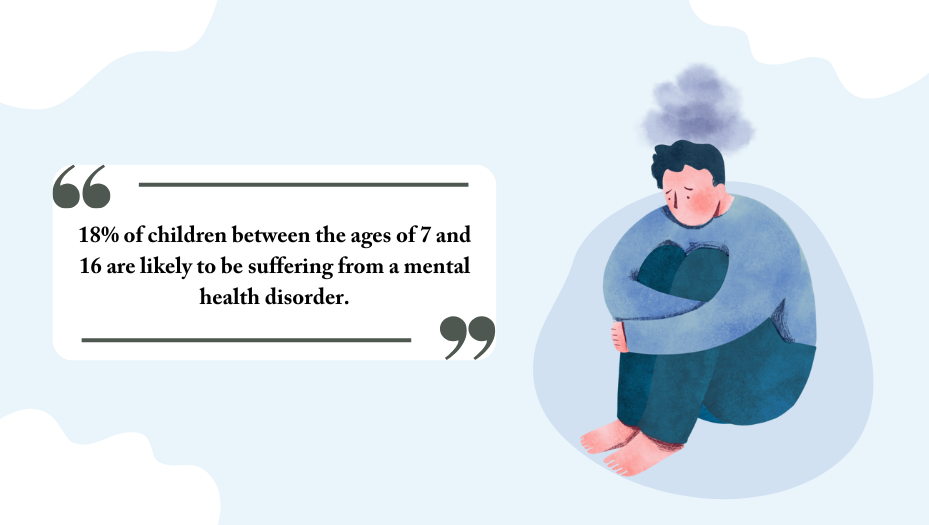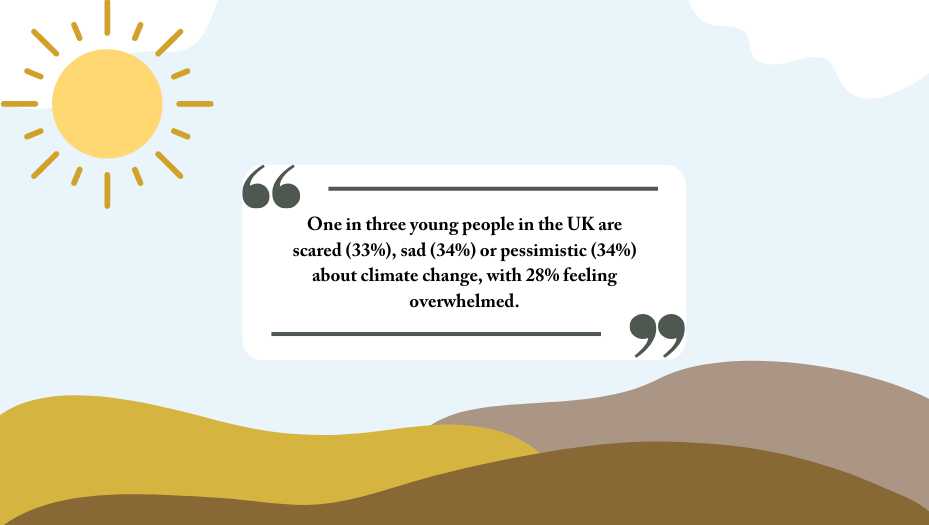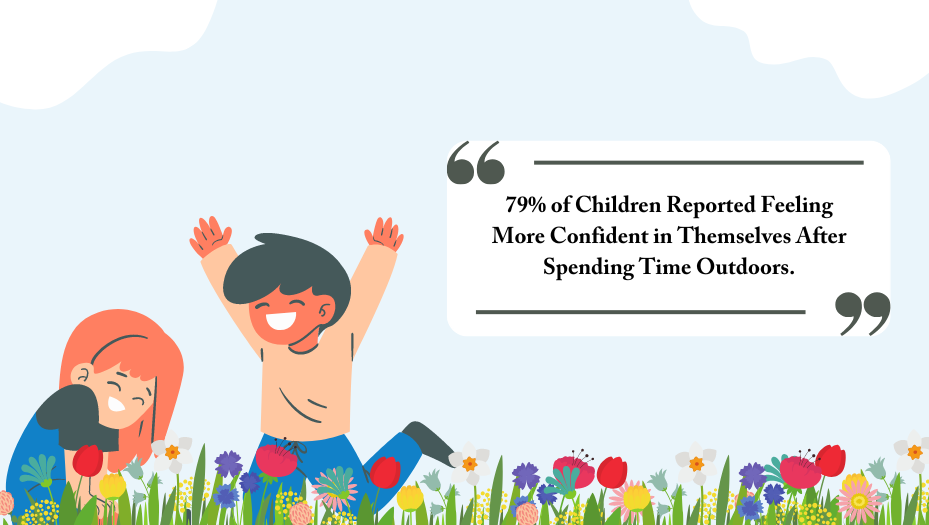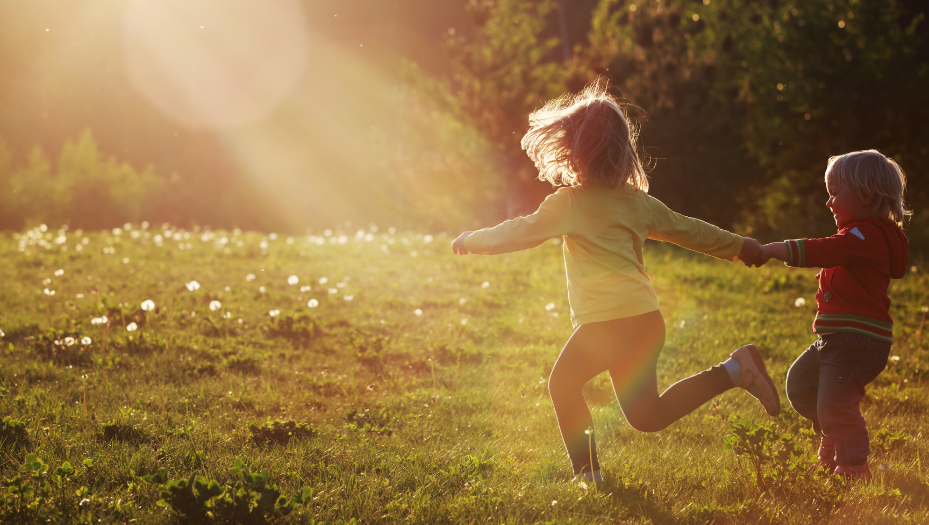There’s no doubt that there is increasing pressure on the population, with the effects of the pandemic, cost of living and rising energy bills creating the perfect storm for negativity and feelings of anxiety, which is also beginning to impact our children.

The latest statistics confirm that:
- In 2022 18% of children between the ages of 7 and 16 are likely to be suffering from a mental health disorder.
- In the last three years, the likelihood of young people developing a mental health problem has increased by 50%.
- Emotional disorders, such as anxiety and depression, in children are on the rise.
- Almost half of the children and teenagers surveyed by Barnado’s felt feelings of sadness or anxiety at least once a week.
- Only 2% of 12 year olds reported never feeling anxious or sad.
- School (65%), the future (42%), and problems at home (31%) were the main culprits of stress and anxiety.
Another common cause of these stresses, and a relatively new phenomenon, is something known as ‘climate anxiety’, which is characterised, according to mentalhealth-uk.org: “a sense of fear, worry or tension linked to climate change.”
This is something that is especially impacting young people, according to statistics from the Woodland Trust:

“Young people are experiencing an epidemic of climate anxiety and are increasingly worried about the health of the planet,” says Woodland Trust Chief Executive Dr Darren Moorcroft,
“This new data shows that climate change is jeopardising more than just the environment, with people’s mental well-being and future life plans also affected,” continues Dr Moorcroft.
How Can We Help Kids With Their Mental Health?
Gardening
When given the opportunity, kids love getting into the garden, exploring the soil, planting seeds and having the responsibility for taking care of their own plants.
Selecting plants, vegetables and flowers that are easy to grow in a relatively short space of time, gives your kids’ the opportunity to take pride in the achievement as the green shoots appear.
Some of the easiest to sow, grow and cultivate are:
- Sunflowers – sunflower seeds are well suited to smaller hands due to their size, and they can be sown in pots initially and then moved into the garden once they’ve established.
- Wildflower Mixes – the ultimate low-maintenance option. All you need to do is buy a box of premixed seeds; have your child sprinkle them onto bare soil; pat down lightly and water them. You’ll begin to see results in just a few weeks, particularly during the warmer months when the soil is warm.
- Salads – growing vegetables is a fantastic way to not only encourage children to explore new flavours and textures, but also to explain the hard work that’s required to put food on our plates. Salads grow quickly, so you can continue to sow seeds throughout summer for an almost constant supply.
Working with Wildlife
One of the best ways to open the kids up to the wonders of nature is by actively working to protect it.
Many frequent visitors to UK gardens are in decline, such as frogs and toads, birds, insects, and small mammals like hedgehogs, so this is a good exercise to give a helping hand to these species and get your little one involved too.
Things such as bird feeders, hedgehog houses and insect hotels can be bought relatively cheaply. Alternatively, for something even more hands-on for you and the kids, you could recycle some old materials and have a go at making some of your own.
Night Time Camp Outs
Although we see plenty of animal species out and about during the daytime, under the cover of darkness, our nocturnal garden inhabitants make their appearance.
A great way to get your kids outdoors is a night time camp out in the garden, this doesn’t have to mean camping out all night, but simply means enjoying the sights, smells and sounds of the outdoors against an exciting backdrop that children aren’t used to.
Things to look out for, include:
- Bats – there are sixteen bat species in the UK.
- Owls – you’re most likely to see barn and tawny owls.
- Foxes – usually begin hunting in the early evening.
- Moths – we have many colourful and large species in the UK, most of which are nocturnal.
- Hedgehogs – you’ll often hear them, before you see them.
- Amphibians – although not all of them are strictly nocturnal; frogs, toads and newts are best spotted at night.
What Problems Do We Face Accessing Nature?

The UK is one of the most nature depleted countries in the world, and this accounts for significant damage to animal and plant life, with over 40% of plant and animal life declining since the 1970s.
This has been exacerbated by the decline in our green spaces, which are not only crucial for the plants and animals that rely on them for food and habitats, but for our own mental and physical wellbeing too.
“Deprived areas where there is little greenery or access to green space tend to have higher levels of mental ill-health.” Says Dr Deborah Lee, a medical writer that worked within the NHS for over thirty years as a qualified GP and Doctor.
“Indeed, research also suggests that those from lower socioeconomic groups benefit more from access to green spaces than those who are more advantaged.”
The Office of National Statistics have compiled data on gardens and public green spaces in the UK, and have identified some of the following statistics:
- Up to 9.6 million people (1 in 5) in the UK are deprived of access to green space.
- Those from Black, Asian and minority ethnic backgrounds are twice as likely to live in neighbourhoods with minimal access to green space.
- 40% from BAME backgrounds live in some of the most deprived green space areas of the UK.
- The average amount of public green space available in the most deprived areas is roughly equivalent to the size of a garden shed.
- Children from those deprived areas are 20% less likely to spend time outdoors.
Under ambitious new plans, the Government has announced that no one will live more than 15 minutes away from a green space or a clean water source. Under the plans, habitat for wildlife will be expanded and there will be 25 new or enlarged national nature reserves with clean land, water and air for children and adults alike.
What Can We Do to Reconnect Our Children with Nature?

Children are curious about the world, and will soak up the sights and sounds of nature.
Learning about nature is an essential aspect of childhood development, and when they are able to fully explore the world around them, they can gain a special connection with the plants and animals, especially those which reside in our gardens.
A study conducted by the Institute of Education at UCL, commissioned by The Wildlife Trust, evaluated the effects of natural experiences on children. The study focused on over 450 primary school children who participated in Wildlife Trust-led activities.
The children showed an increase in their personal wellbeing and health over time, and they demonstrated high levels of enjoyment and an increase in their connection to nature.
In addition to the personal and social benefits, the children gained educational benefits as well:
- 90% of children learned something new about the natural world
- 79% believed that their experience could help their school work
- After their activities, 84% of children felt that they were capable of trying new things
- 79% of children reported feeling more confident in themselves
- 81% agreed that they had better relationships with their teachers
- 79% reported better relationships with their classmates.
This shows how vitally important it is to get children into nature, here’s a few ways to do this with your children:
Make it An Everyday Activity
It’s important that we treat time outdoors as a part of our daily routines, rather than as a regimented event.
Although it’s important to supervise and guide your children, there will be times when you need to step back and let them explore, play and experience the world around them.
We can sometimes be overbearing as parents when it comes to playing with mud, and insects, so it’s important to allow our children to find their own feet.
Talk About Nature
When you’re out in the garden, encourage the kids to garden to benefit nature, by helping them identify plants and animals they see.
This can be a great opportunity to discuss some pretty complex subjects, which can be made easier through practical demonstrations, such as feeding, mating, and pollination.
One of the biggest causes of anxiety in children is something known as “death anxiety”, which can manifest itself in multiple ways, often after the loss of a loved one.
When out in nature this is a good time to discuss this with your children, where you can explain the concept of renewal in spring and the cycles of life which change throughout the seasons.
Of course, depending on the age of your children you may wish to consider how you approach these subjects, but the most important thing is to ensure that you do so with understanding, empathy and respect.
Make it An Everyday Activity
It’s important that we treat time outdoors as a part of our daily routines, rather than as a regimented event.
Although it’s important to supervise and guide your children, there will be times when you need to step back and let them explore, play and experience the world around them.
We can sometimes be overbearing as parents when it comes to playing with mud, and insects, so it’s important to allow our children to find their own feet.
Talk About Nature
When you’re out in the garden, encourage the kids to garden to benefit nature, by helping them identify plants and animals they see.
This can be a great opportunity to discuss some pretty complex subjects, which can be made easier through practical demonstrations, such as feeding, mating, and pollination.
One of the biggest causes of anxiety in children is something known as “death anxiety”, which can manifest itself in multiple ways, often after the loss of a loved one.
When out in nature this is a good time to discuss this with your children, where you can explain the concept of renewal in spring and the cycles of life which change throughout the seasons.
Of course, depending on the age of your children you may wish to consider how you approach these subjects, but the most important thing is to ensure that you do so with understanding, empathy and respect.
Forest Schools

Forest schools have been a mainstay in the British education system since the 19th century, although they only returned to prominence in mainstream education in the 1990s.
Many early years education settings, such as childminders, nurseries, and playgroups now offer this to children, and by selecting a setting that offers this service, you can help to instil a lifetime of enjoyment and curiosity in your child.
Forest schools offer hands-on experience in nature, and help to support play, exploration and structured risk taking, which improves self-esteem, knowledge and curiosity – all vital components required well into adulthood.
Understanding Mental Health Symptoms in Children
Mental health problems can impact children of all ages, but it’s important to be aware of the different signs and symptoms that may indicate that a child is struggling.
Some of the most common signs are:
- Mood Changes – Children struggling with their mental health may experience changes in their mood, such as sadness, irritability, anxiety and anger.
- Behavioral Changes – This may manifest itself in withdrawing from friends and family, losing interest in hobbies or activities, or acting in ways that get them into trouble.
- Physical Changes – Some mental health issues present themselves as physical symptoms, most commonly such as headaches, stomach ache, or changes in appetite or sleep.
- Changes in School Performance – This may result in struggling to pay attention, falling behind, completing tasks or withdrawing from friends.
If you’re concerned about your child’s mental or physical wellbeing there are a number of resources available:
Resources:
Find Green Spaces Near You
- OS Greenspace
- National Trust Find a Wood
- National Trust Forest Therapy
- Forest School Association Members Directory
Mental Health Resources
- Children and young people’s mental health services (CYPMHS)
- Young Minds
- Happy Maps
- Mind
- Wilderness Foundation
- WWF – Thriving With Nature
- https://www.childbereavementuk.org/telling-a-child-that-someone-has-died
Mindfulness Resources
Study Resources
- https://digital.nhs.uk/data-and-information/publications/statistical/mental-health-of-children-and-young-people-in-england/2022-follow-up-to-the-2017-survey
- https://www.childrenssociety.org.uk/what-we-do/our-work/well-being/mental-health-statistics
- https://www.local.gov.uk/about/campaigns/bright-futures/bright-futures-camhs/child-and-adolescent-mental-health-and
- https://happiful.com/new-survey-uncovers-whats-making-kids-feel-anxious
- https://www.groundwork.org.uk/news-report-finds-severe-inequalities-in-access-to-parks-and-greenspaces-in-communities-across-the-uk/
- https://www.woodlandtrust.org.uk/press-centre/2023/03/young-people-climate-anxiety-green-space-access/
- https://www.theguardian.com/environment/2013/oct/16/uk-children-not-connected-nature-rspb
- https://www.nhm.ac.uk/discover/news/2020/september/uk-has-led-the-world-in-destroying-the-natural-environment.html
- https://www.nhm.ac.uk/discover/news/2019/october/the-state-of-nature-41-percent-of-the-uks-species-have-declined.html
- https://www.ncbi.nlm.nih.gov/pmc/articles/PMC8392385/
- https://www.wildlifetrusts.org/news/new-report-nature-nurtures-children
- https://www.guideandgrow.com/explaining-death-to-children
- https://friendsoftheearth.uk/nature/access-green-space-england-are-you-missing-out

